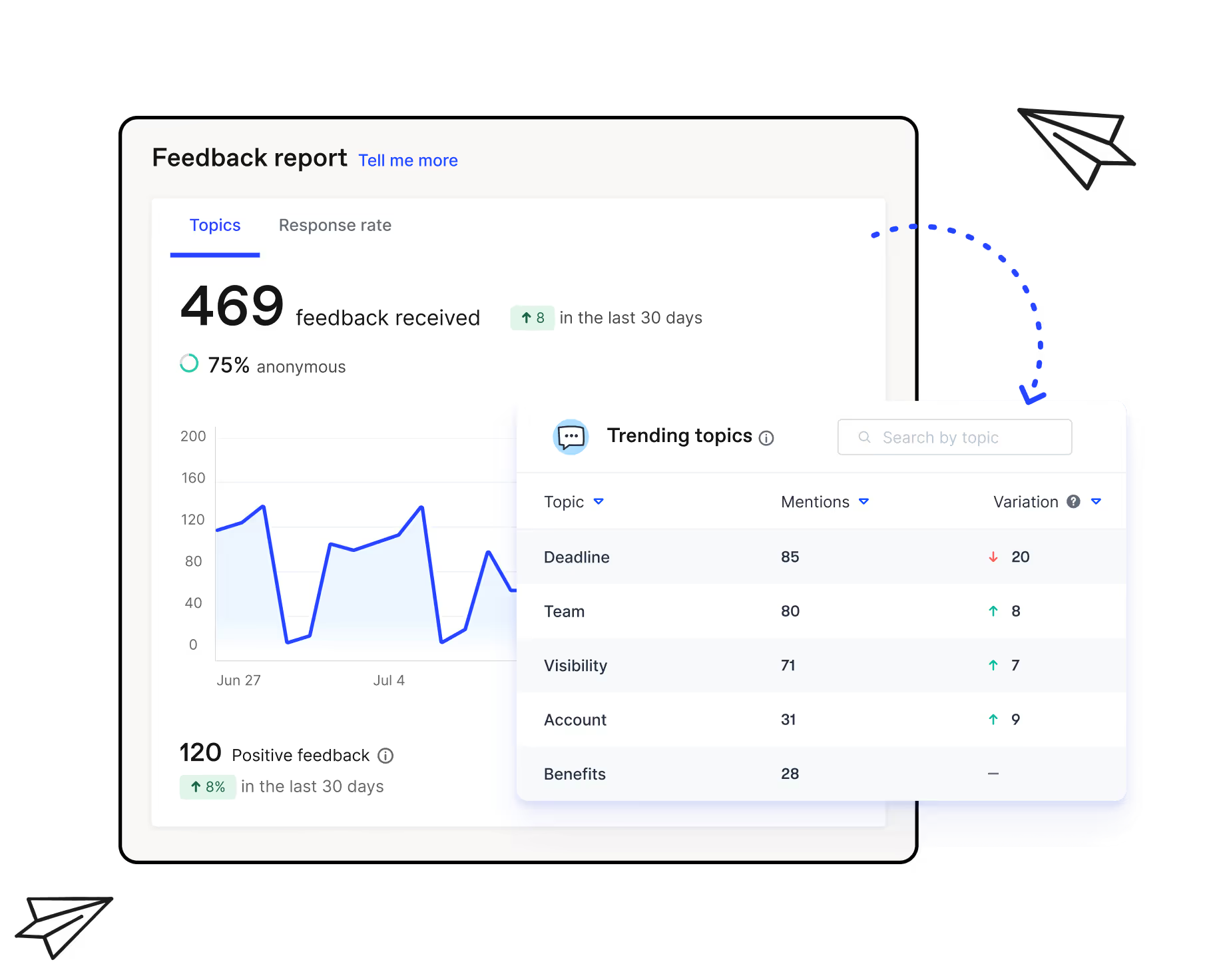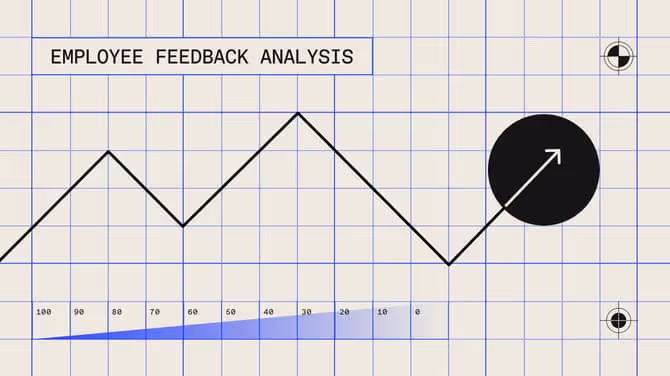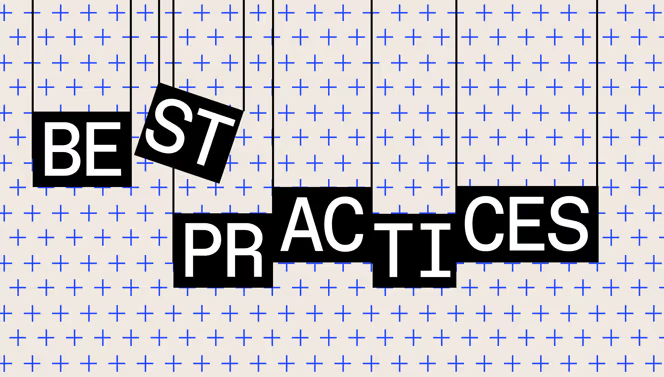Drive organizational change: How to grow with employee feedback

Discover Workleap Officevibe's benchmark report on 12 key employee engagement metrics

Picture this: You’re a leader at a company that never asks employees for their opinions. Employee engagement is low, turnover is high, and every day feels like putting out fires instead of building a high-performing workplace. Sounds messy, right? Just like a car running on empty, an organization without feedback can’t go too far.
Employee feedback is the fuel that powers organizational growth. It highlights strengths, reveals areas needing improvement, and guides strategic decisions. Without it, companies miss critical insights that can drive performance and innovation.
In this article, we’ll delve into how effectively collected and actioned employee feedback can drive progress. We’ll explore the strategic importance of feedback, best practices for gathering and analyzing it, and how to turn insights into actionable steps that transform your organization. From real-world case studies to overcoming common challenges, by the end, you’ll be equipped with the tools to leverage feedback and drive positive change in your company.
The strategic importance of employee feedback
Employee feedback serves as a mirror that reflects both strengths and weaknesses. Companies can gain deep insights into their operational efficiency, workplace culture, and overall employee satisfaction by actively seeking and acting on employee feedback. This information is crucial for continuous improvement and strategic decision-making.
Identifying strengths and weaknesses in your organization
Employee feedback provides a frontline perspective that management might otherwise overlook. It highlights what the organization is doing well — such as effective communication, supportive management, and strong team collaboration — and where it falls short. For example, feedback can reveal systemic issues like inadequate training, lack of career development opportunities, or poor workplace morale. Addressing these weaknesses straightaway can prevent larger problems down the line.
But feedback isn’t just about pointing out flaws. Positive feedback can help identify areas of strength that leaders can leverage for competitive advantage. For example, if employees consistently praise a particular manager's leadership style, those practices can be modeled and promoted throughout the organization.
The link between employee feedback and organizational performance
The connection between employee feedback and organizational performance is well-documented. Feedback fuels a cycle of improvement that enhances employee engagement, productivity, and, ultimately, business outcomes. When employees feel their voices are heard, they are more likely to be engaged and committed to their work. And 78% of Workleap Officevibe respondents agree that the feedback they receive helps them grow and develop.
According to Salesforce, employees who feel their voice is heard are 4.6 times more likely to feel empowered to perform their best work. This empowerment increases productivity and innovation, as employees are motivated to contribute their best ideas and efforts.
Gallup's research supports this, showing that effective feedback on managerial strengths leads to an 8.9% increase in profitability. Managers who receive constructive feedback can better align their strategies and leadership styles to meet their team's needs, resulting in higher performance and financial returns.
Furthermore, a Harvard Business Review study found that 92% of respondents believe that even negative feedback, if delivered appropriately, enhances performance. This number underscores the importance of a feedback-rich culture where open communication and continuous improvement are prioritized.
Collecting effective employee feedback
Employee feedback is crucial, but how do you collect it effectively? Let's get into best practices and tools for gathering honest and valuable feedback.
7 best practices for gathering employee feedback
- Surveys: Efficient for gathering large amounts of data quickly. Make sure questions are well-designed to yield useful insights.
- One-on-one meetings: Personal and direct, allowing for deeper conversations and nuanced feedback.
- Feedback apps: Facilitate real-time, continuous feedback among team members.
- 360-degree feedback: Collects feedback from various sources, providing a holistic view of performance.
- Exit interviews: Offer valuable insights from departing employees about the work environment and reasons for leaving.
- Town hall meetings: In this open forum, employees can ask questions and provide feedback to the management team.
- Observation: Managers or HR teams can observe employees in their work environment to gather feedback, particularly useful for understanding team dynamics or identifying operational issues.
Creating a safe space for honest feedback
For feedback to be valuable, employees must feel safe sharing their thoughts. Anonymity is crucial in this regard. Employees are more likely to be honest when they know leadership cannot trace feedback back to them. Additionally, fostering a culture of openness and trust, where feedback is seen as a tool for growth rather than criticism, is essential.
💡Learn more about Psychological safety: the key to high-performing teams
Timing and frequency of collecting feedback
Feedback should be collected regularly to remain relevant and actionable. Practical approaches include quarterly surveys, monthly suggestion reviews, and ongoing one-on-one meetings. This continuous feedback loop helps organizations stay attuned to employee needs and concerns, allowing for timely interventions.
Tools and technology for collecting feedback
Introducing the right tools can significantly enhance the feedback collection process. Workleap's feedback tools are designed to streamline and optimize this process. Our platform offers features like anonymous surveys, sentiment analysis, and real-time feedback dashboards, making gathering and interpreting employee insights easy.

Analyzing and actioning employee feedback
Collecting feedback is only the first step. The real value comes from analyzing and acting on it.
Analyzing feedback for actionable insights
Techniques like sentiment analysis and thematic analysis can help identify common themes and overall employee sentiment. Workleap’s engagement analytics simplify this process, categorizing feedback, highlighting trends, and providing visual summaries.
Organizations can gain insights into various aspects of their operations by using Workleap’s tools to analyze employee feedback data. For example, feedback might reveal that employees feel underappreciated, leading to the implementation of a recognition program. Alternatively, consistent feedback about insufficient training could prompt the development of a more robust onboarding process.
Turn feedback into action
Once feedback is analyzed, the next step is to act on it. Here’s a structured approach:
- Prioritize feedback: Categorize feedback into themes and identify the most critical issues based on impact and frequency.
- Set clear goals and objectives: Define specific, achievable, and time-bound goals for addressing each issue.
- Assign responsibilities: Designate tasks to appropriate team members or departments to ensure accountability.
- Develop a detailed action plan: Outline steps, resources needed, timelines, and success metrics.
- Communicate the plan: Summarize feedback received, actions to be taken, timelines, and opportunities for further feedback.
- Implement the plan: Follow the established timeline and address assigned tasks, with regular check-ins and updates.
- Monitor progress and make adjustments: Continuously monitor progress, collect follow-up feedback, and adjust strategies as necessary.
- Evaluate and report outcomes: Compare outcomes to success metrics, report improvements and lessons learned, and outline the next steps.
Driving organizational change with feedback
Companies, both big and small, can revolutionize their success by tapping into employee feedback to drive strategic decisions.
Take Netflix, for example, which has embedded a continuous feedback culture into its daily operations. They emphasize the importance of ongoing, constructive feedback and have trained their employees on how to give and receive it effectively. This practice has helped align everyone with the company's goals and values, fostering a sense of ownership and responsibility among employees. The continuous feedback loop at Netflix strengthens the team and ensures that everyone is working towards the company's vision.
{emphasize}
Company Spotlight: Thirdbridge's success with feedback-driven changes
Thirdbridge, a global research firm, successfully implemented feedback-driven changes using Workleap's Officevibe. Their journey highlights the transformative power of a healthy feedback loop in fostering a positive work culture and enhancing organizational performance.
Feedback culture
Director of Operations Alexandre St-Aubin emphasizes the importance of normalizing constructive feedback within the company culture. This feedback loop became integral to continuous improvement and employee engagement. As he noted, “Using Workleap Officevibe was the first step in building this feedback culture” at Thirdbridge.
Quantifiable improvements
The implementation of Workleap Officevibe led to key measurable improvements:
- Enhanced communication: Regular feedback made communication during one-on-one meetings smoother, as issues were already flagged in surveys.
- Increased employee satisfaction: Employees felt heard and valued, which translated into higher satisfaction levels.
- Proactive problem-solving: The Talent and Culture committee used feedback data to address minor and major issues, such as revamping the performance management program based on employee dissatisfaction.
Read the full story, including a look at Thirdbridge’s impressively high engagement scores with Workleap Officevibe.
{emphasize}
Overcoming challenges in implementing feedback processes
Collecting and actioning feedback is not without its hurdles. Here are some common challenges and solutions organizations face:
{highlight}Challenge{highlight}: Low response rates
{highlight}Solution{highlight}: Communicate the purpose and importance of feedback, and consider offering incentives.
{highlight}Challenge{highlight}: Fear of repercussions
{highlight}Solution{highlight}: Ensure anonymity and build trust by fostering a culture of growth rather than criticism.
{highlight}Challenge{highlight}: Lack of anonymity
{highlight}Solution{highlight}: Use anonymous surveys and modern feedback tools to increase honesty.
{highlight}Challenge{highlight}: Ineffective feedback tools
{highlight}Solution{highlight}: Implement and regularly update advanced feedback tools like pulse surveys and sentiment analysis software.
{highlight}Challenge{highlight}: Lack of follow-up
{highlight}Solution{highlight}: Regularly update employees on how their feedback is being used and what changes are being implemented.
{highlight}Challenge{highlight}: Volume of data
{highlight}Solution{highlight}: Leverage data analytics tools to manage and analyze large volumes of feedback efficiently
{highlight}Challenge{highlight}: Resistance to change
{highlight}Solution{highlight}: Involve employees in planning and decision-making and provide training to help them adapt to changes.
{emphasize}
When you get right down to it, your employees are speaking — make sure you’re listening. Workleap Officevibe's employee feedback tools make it a whole lot easier to collect honest insights anonymously so that you can get a handle on what's really going down. Understand sentiment, track it over time, and use data to make strategic decisions that drive your organization forward.
Try Workleap Officevibe for free today
{emphasize}
The transformative power of employee feedback
Employee feedback is more than just a tool — it's the fuel that powers organizational growth and transformation. By actively seeking and acting on feedback, you can unlock insights highlighting your company’s strengths and pinpoint areas needing improvement.
Harnessing employee feedback isn’t just about collecting opinions — it's about driving continuous improvement and fostering a high-performing culture. Integrating feedback into daily operations (with the guidance of tips shared in this article) ensures your organization is agile, innovative, and aligned with employee needs.
Ready to transform your organization with the power of feedback? Try Workleap Officevibe's simple tools designed to streamline the feedback process, making it easier to collect, analyze, and act on employee insights. From anonymous surveys to AI-powered sentiment analysis, Workleap provides the resources to build a feedback-rich culture and drive transformative change in your organization.
Give HR and managers the clarity, confidence, and connection to lead better every day.


%20(1).avif)


.avif)
.avif)








